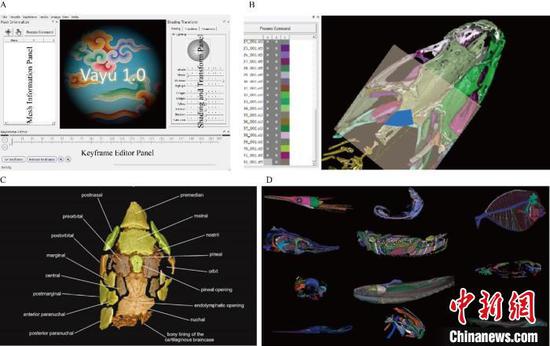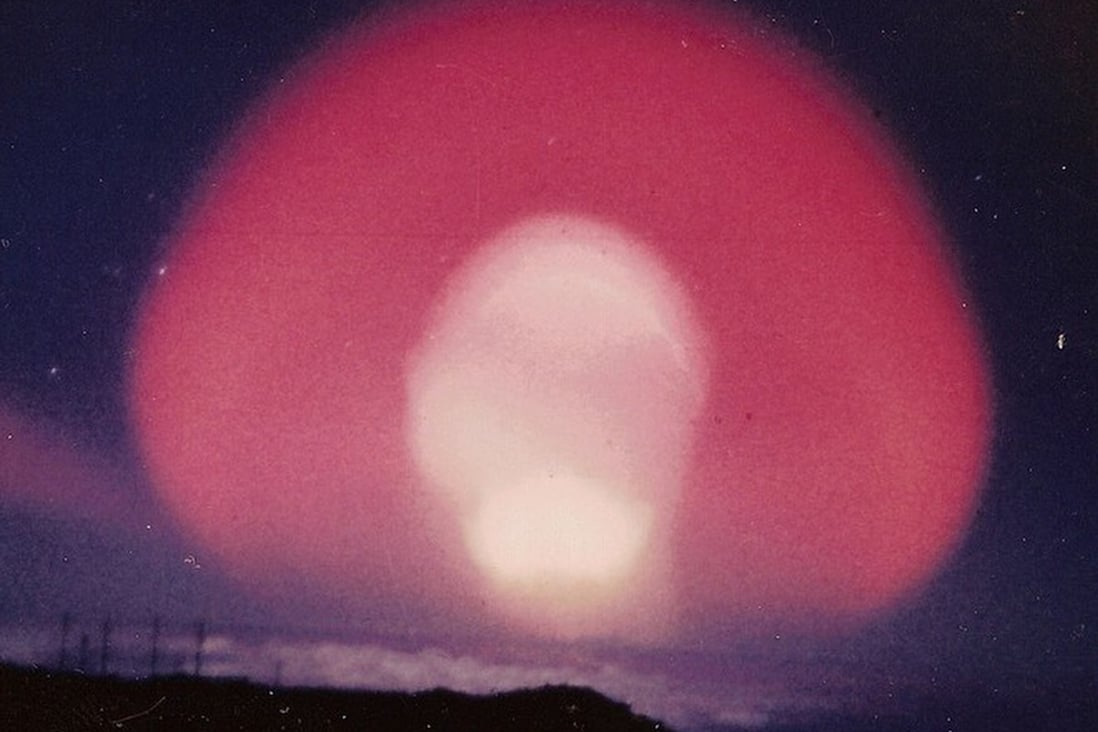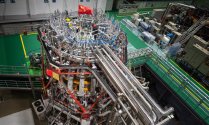Chinese physicists simulate nuclear blast against satellites
- Computer experiment suggests warhead detonated in near space could disable threats such as Elon Musk’s Starlink satellites
- Explosion could produce a cloud that sets a trap for enemies while reducing risk to ‘friendly’ spacecraft, according to model
A nuclear blast in near space could create a
over an area as big as New York state, crippling or destroying satellites in near-Earth orbit, according to a new computer simulation conducted by a team of Chinese military scientists.
At the Northwest Institute of Nuclear Technology, a research institute run by the People’s Liberation Army in Xian, researchers developed a model that can evaluate the performance of nuclear
at different altitudes and yields with unprecedented detail and accuracy.
The simulation results suggest that a 10-megaton warhead – modestly powerful by today’s standards – could create a serious threat to
if it detonates at an altitude of 80km (50 miles).
The blast could turn air molecules into radioactive particles and produce a cloud with a shape similar to an upside down pear, said nuclear physicist Liu Li and his colleagues in a paper published in the peer-reviewed journal Nuclear Techniques on October 15.
In about five minutes, the cloud could rise to an altitude of nearly 500km and spread over an area of more than 140,000 sq km.
“The strong residual radiation of the debris cloud may cause failures of
, such as satellites, or even cause direct damage that can lead to destruction,” the researchers said.
A targeted trap
There have been many computer simulations studying the use of nuclear weapons against satellites, but most have focused on an explosion that takes place in space, according to Liu’s team.
A space-based explosion would not produce much of a cloud because of the lack of air. High-energy particles generated by the event would mostly be captured by the Earth’s magnetic field and spread around the globe as a radiation belt, threatening a wide range of spacecraft. This could render nuclear weapons ineffective and too dangerous for an anti-satellite mission.
But because of the presence of air molecules in the Earth’s atmosphere, an explosion in near space would create a cloud with a total mass far greater than the bomb itself, according to Liu.
“Due to the high concentration of fission products inside the debris cloud, the released gamma rays and beta particles are strong, making their effects on spacecraft and communications within the affected area stronger,” Liu’s team wrote.
Immediately after the blast, the cloud would rise straight up at a speed of up to 2.3km/s, setting a huge trap for target satellites. Instead of remaining in orbit, most of the air molecules would fall back to Earth, avoiding the radiation belt effect and significantly reducing the risk to other satellites or spacecraft, according to the simulation.
New threats
A Chinese military study published in May called SpaceX’s
to China’s national security and urged the development of capabilities to disable or bring it down.
Starlink aims to put tens of thousands of small satellites in low-Earth orbit. Chinese military researchers worry that these satellites could provide communication services to rivals or slam into China’s space station or satellites, acting as “suicide agents” to disable Chinese space infrastructure during a war.
Conventional countermeasures such as anti-satellite missiles could take out a limited number of high-value targets, but losing a few low-cost satellites would not affect Starlink’s operations.
Some Chinese researchers have therefore proposed hitting a few carefully selected targets that could produce a small amount of space debris. The debris would hit other satellites in the same orbit and create more debris, effectively creating a gap in the Starlink network. But keeping the debris away from friendly satellites would be a challenge.
Legal questions
The simulation does not mean China will use such a weapon, according to a Beijing-based space scientist.
“International law has banned the testing or use of nuclear weapons in both space and the atmosphere,” said the researcher, who requested not to be named because of the sensitivity to the issue.
The results of the simulation apply not only to satellites but hypersonic weapons, many of which are designed to travel long distances at near-space altitudes, said the researcher.
“Whether it is legal to use nuclear weapons as a defence measure against a hypersonic weapon attack remains a subject of debate in the research community,” he added.
China has not tested a nuclear weapon in near space.
On August 1, 1958, the US detonated a 3.8-megatonne bomb at an altitude of 77km over the Johnston Atoll west of Hawaii – an experiment known as the Teak test.
Some Honolulu residents said the explosion created a fireball that turned from light yellow to red, and a huge cloud rose from the fireball and remained visible for about half an hour.
Liu’s team said their computer simulation closely matched the results of the Teak test, which eventually produced a cloud more than 700km across.
Though the physical process involved in a near-space explosion is extremely complex, the new model could produce an estimate of the range and scale of damage “with high confidence” in just a few minutes, they added.






